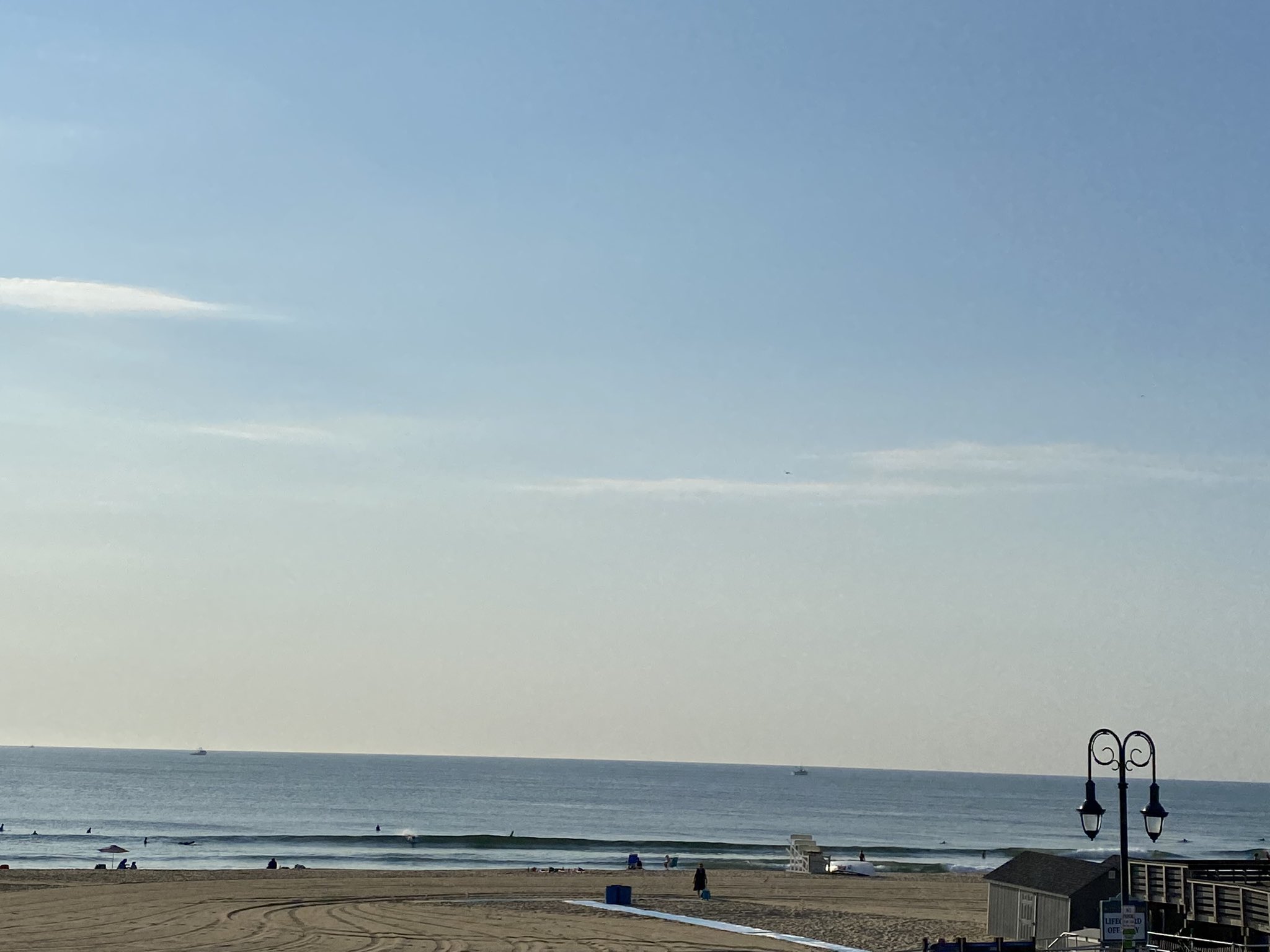Jersey Shore whale watch is a three-hour whale watching tour. We go usually into the Atlantic Ocean or the Rartian Bay, and we search for whales primarily, of course. We also point out birds and other marine life, such as dolphins, that we often see.
During the excursions, most customers are hoping to see the largest animals on Earth.
This 3-hour journey includes up close encounters with both whales and dolphins, plus a lesson on the history of marine life at the Jersey shore. $60-70 adults, $39 for children (4-12 years old); children under 4 are admitted for free. https://jerseyshorewhalewatchingtour.com
Large Whales
Sperm whale (Physeter microcephalus)

Aerial photograph of a sperm whale.
Photo by: Kate Lomac-MacNair
Status in New York: Endangered
Federal Status: Endangered
- Diet: Mostly squid which they hunt using echolocation
- Size: Females on average weigh 15 tons and are 40 feet long. Males weigh 45 tons and are 50 feet long.
- Lifespan: Live up to 60 years.
Sperm whales, known for their deep diving, are found off New York at the continental shelf break and occasionally in the shallow waters near Montauk and Block Island. They are the only toothed large whale and can dive to over 2,000 feet for up to 45 minutes. Sperm whales have the largest brain of any animal to have ever lived and are named for the waxy substance found in their heads (spermaceti) that was used in candles and ointments when whaling was still practiced.
North Atlantic Right Whale (Eubalaena glacialis)

Aerial photograph of a North Atlantic right whale.
Photo by: Kate Lomac-MacNair
Status in New York: Endangered
Federal Status: Endangered/ Critically Endangered
- Diet: They eat about 3,500 pounds of copepods per day with baleen plates that are 8 feet long. The distribution of their prey heavily influences their own locations
- Size: Grow to be 50 feet long and weigh up to 70 tons.
- Lifespan: Live to around 70 years.
The majority of North Atlantic right whale sightings in New York is within 50 miles of shore. The species was given its name because it was the “right” whale to hunt. Now, it is one of the most critically endangered large whales in the world with an estimated 400 individuals left. The availability of high-quality prey is important for successful breeding since females reach sexual maturity at 10 years old. Individual whales can be identified by the patterns of white marks (callosities) on their head.
The New England Aquarium in Boston, MA has compiled the North Atlantic Right Whale Catalog (link leaves DEC’s website).
Blue Whale (Balaenoptera musculus)

Aerial photograph of a blue whale.
Photo by: Kate Lomac-MacNair
Status in New York: Endangered
Federal Status: Endangered
- Diet: Eat primarily krill – up to 6 tons per day.
- Size: Grow to 100 feet, and weigh 165 tons. At birth, 21 feet and 6,000 pounds.
- Lifespan: Live on average between 80-90 years.
The blue whale is the largest animal to have ever lived on Earth, as well as the largest species of whale that can be found in all the world’s oceans. Their tongue weighs as much as an elephant and their aorta is big enough for a man to crawl through. They are generally found along the continental shelf break. It is believed that blue whales are using the waters of the NY Bight primarily as part of their migration routes from summer feeding areas to lower latitude winter breeding grounds.
Fin Whale (Balaenoptera physalus)

Aerial photograph of a fin whale.
Photo by: Kate Lomac-MacNair
Status in New York: Endangered
Federal Status: Endangered
- Diet: Eat up to 4,000 pounds of krill, small schooling fish, and squid per day. Often feed in groups with other species.
- Size: Grow to 85 feet, and weigh up to 60 tons.
- Lifespan: Live up to 90 years.
Fin whales, also known as finback whales, are the most abundant species of large whale in New York and most widely distributed. Can be seen close to shore. They’re the second largest whale and can sustain speed of 23 miles per hour, called “greyhound of the sea”.
Humpback Whale (Megaptera novaeangliae)

Aerial photograph of a humpback whale.
Photo by: Kate Lomac-MacNair
Status in New York: Currently under review
Federal Status: Not at Risk
- Diet: Feed on menhaden in New York, up to 3,000 pounds per day.
- Size: Grow up to 60 feet, and weigh 40 tons.
- Lifespan: Live an average of 80-90 years.
Humpback whales are very commonly seen around New York, close to shore in the summer and fall, but are also seen further offshore. They’re known for bubble net feeding and breaching. Individuals identified by patterns on the underside of their flukes. Learn more about the delisting of humpback whale population segments under NOAA’s featured stories (link leaves DEC website).




